Benefits and problems of the Singapore GRC Parliamentary system
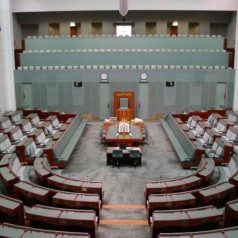
The GRC system in Singapore must be one of the most criticized point of the election system in the last many years! One of the main criticism is that it does not serve it’s primary pupose well, and it only serves the incumbent party in preventing opposition candidates from getting into Parliament.
But before we judge, let’s look at the Paliamentary systems of various countries.
Singapore follows a Westminister system from the British. This basically means there is an overlap of legislative and executive arm in the Government, as the ministers are typically chosen from the MPs or Members of Parliament. In simple terms, a Government typically consists of the Judicial arm which judges right and wrong, the Legislative arm which makes the laws of the land and the Executive arm, which basically consists of the Ministries and involves the running of the country. Theres also 2 main types of government, being unicameral, which means there is only 1 legislative chamber (such as Singapore), and bicameral, which typically consists of 2 chambers, being the Senate and the House of Representative. Most countries in the world would have a bicameral system, unless the country is small.
In summary, Singapore has a Westminister system with a unicameral government, consisting of 87 Members of Parliament and 20 Ministers, ruling a 5 million population on a 710 km sq piece of land.
Some people tend to be confused on how a MP and a Minister differ. Basically a MP, or Member of Parliament, is someone who takes care of a certain constituency in the country, bringing up issues to Parliament to debate, and voting on these issues. As a collective, they decide on the law of the land. A Minister is essentially the head of a Ministry in the civil service. They are like your CEOs and they would execute on the plans of the government.
In Malaysia they basically have a Westminister system with bicameral government of House and Senate. There are a total 70 Senators, 2 each from the 13 state assemblies, and 44 appointed by the King. The House of Representatives consists of 222 members appointed via single member districts. Drawing a comparison, this house would be similar to our MPs in Singapore and the Senators would be similar to the senior MPs or basically people with working knowledge to serve a broader objective rather than just a single member district. I am not a political science student, so I don’t understand the full implications of this. Though it seems that the House are a representative of the citizens, whereas the Senate is a regional representative of the experienced people. The PM is typically appointed from the House and the Ministers can be from either. So in summary, 70 Senators, 222 House Representative and 22 Ministers ruling a 27 million population on 329847 km sq of land. Thailand and Indonesia has a similar system, with 400-600 members in their house of representatives. A bicameral government is useful for a large country, but may not be practical for a small country.
South Korea is one of the other few Asian countries to use a unicameral system. Basically they have an elected President, who will then choose his PM and Cabinet Ministers. As you can see, this is one of the biggest difference from a Westminister system where the legislative and the executive branch of the government is separate. These Ministers are basically chosen from the various ministries. The national assembly consists of 299 members election from single member constituency, and another 56 through other means. So a summary, 355 MPs, around 15 Ministers ruling a 48 million population on 100210 km sq of land.
Just a rough gauge, Singapore has 1 MP for every 57k population and 8 km sq of land, Malaysia has 1 Senate/Representative for every 92k population and 1129 km sq of land, and South Korea has 1 MP for every 135k population and 282 km sq of land. If Singapore has the same population ratio as South Korea, we would only have 36 MPs. But do note, most of these big countries would have their own local/regional government running things. However, the important point is that the number of law makers is small in comparison to the population.
Since Singapore is a small city state, it might be worth looking at a City. Looking at Sydney, they have 38 Local Government Areas with a total 4.5mil population on 121446 km sq of land. Most of the citywide activities are actually taken care by the State Government, and in turn the National Government. Probably this is one thing we would not have in Singapore.
From the above information, the first few things that come in mind is how roles that are segregated in other countries are essentially done by the same person in Singapore. The most obvious reason is our size. We definitely don’t have a segregation between the national governing body, a regional government and a local government. We are just 1 city state. In Singapore, the chairperson for the town council is typically the MP of the constituent. The appointed Mayor of various regions of Singapore is typically a MP. And lastly, the Ministers are appointed from the pool of MP. Some ministers would carry 2-3 portfolios even.
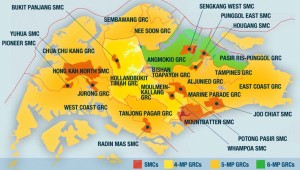
Now after the ridiculously long digression, let’s talk about the GRC system.
In Singapore the GRC or Group Representative Constituency essentially the creation of a larger electoral division and a team of candidates would contest for that division. This was actually created in 1988 as there was actually a decline in the representation of minority interest in the Parliament. This was probably the true reason for the GRC system, since Singapore in the 70s and 80s was one filled with racial tensions and uneven economic growth between the ethnic groups.
However, what happened then was that the GRC system went wild, and they increased from 4 man GRCs to 5, then to 6. This made it very restrictive for opposition candidates to enter Parliament, since there might be 2-3 good candidates, but still not enough to form a team to compete in a GRC.
Arguably, Gerrymandering and the GRC system has made it prohibitive for an opposition party to win seats in the parliament. In my opinion, gerrymandering is all but obselete. Social media and the internet has made a nation into a homogeneous pool. While you can target polling results down to a set of blocks, you will never know what they would vote for in the next election anyway. In the last GE2011 of Singapore, Workers’ Party has made gerrymandering more irrelevant by contesting in contiguous constituencies. This has made it such that no matter how you slice it, they would be competing on both sides of the electoral boundaries anyway. In the coming elections, if the Workers’ Party is able to gain momentum, they might be able to field teams to compete in 5-7 contiguous constituency.
Do note that according to the Singapore Constitution, there must be at least 12 SMCs.
But then, there must be a benefit of having a GRC right? GRCs allow us to pool together resources of a larger town council. A typical Single Member Constituency has about 20,000 to 30,000 population. A 4man GRC has around 80,000 to 100,00 population, and up to 180,000 for a 6man GRC. The truth is, not every constituency needs a stadium, a sports complex, or a hospital. A bigger GRC creates a kind of a township to allow for some form of planning since technically, it is the job of the MP to pursue for benefits for his constituency. Of course, theoretically there are government bodies such as the Ministry of National Development, Ministry of Transport, and various other ministries which are suppose to be in charge of this kind of planning. But it is suppose to be the job of the MP to lobby for such benefits for their constituency.
A bigger GRC also allows for sharing of manpower. If 1 part of the constituency requires more manpower for the short term, people can be pulled over from the other parts of the same GRC. This is basically used to create an autonomous division with it’s own facilities and manpower. In a way, it is somewhat like a regional government.
However, one of the things that a bigger constituency will lose out is the human touch. By having a higher ratio of MPs to population, the MPs are more likely able to keep in touch with the people on the ground. Take a look at Chiam See Tong in Potong Pasir where he is able to know the residents of the area intimately during his time there.
Another problem created by the GRCs is the argument that someone who knows how to run a SMC, might not know how to run a 6 man GRC because of slightly different skill sets. But that means it leaves us with a small group of people able to run large townships. Definitely not a good thing for the long term.
One of the biggest problem for the GRC system is the all-or-nothing scenario in elections. When a team wins a GRC, all the members get in, regardless of their ability. Likewise, when a team loses a GRC, all members gets kicked out, even if there are competent people that the people might want to retain.
But what should be done? One of the most common ideas mooted is to abolish the GRC system. I personally feel the GRC system still has its uses. Perhaps we can have only Single Member Constituency, but having an appointed Mayor from the MP of the wards to cover a larger area.
Tan Kin Lian came out with a few ideas, such as the segregation of MPs and ministers. This would mean another step away from the Westminister system. I think this can be useful too, since there might be people who are interested in policy making, but not interested in grassroots work, and there might be people interested in execution, but not so much on policy making.
Singapore has one of the highest MP to population ratio, but yet, still the lowest absolute number of MPs. This is inherently due to our small size. 1 interesting idea is to turn everything into Single Member Constituencies, but with a higher population of say 70k to 100k. This would be like a size of a 4 man GRC currently. However, make it such that only 1 person stands for election and will become the MP. He would have 3 other assistants appointed by him after the election to become head of the town councils and other roles in the grassroots. These people would also appear in the Parliament, but not with the same voting rights. In effect, you have a group of senior ‘full voting rights’ MP, and junior members. This can be combined with the idea about regarding the segregation of MPs and ministers.
Another idea worth considering is to retain the GRC system, but to allowo the seats to be won individually. A few concepts can be used for this, such as the change of the voting system from Plurality voting, to Plurality-At-Large voting. Our current Plurality voting is basically a winner-takes-all system, where the winner of the vote will take everything and be the sole winner. One of the most common problems about Plurality voting in Single Member Constituencies is the formation of 2 large party as the rest tend to get wiped out and alternative views will get ignored. An example is the recent Punggol East SMC, where the only 3 corner contest took place. PAP and WP swept 95% of the votes and SDA taking only 4.4%. Plurality at large basically preserves the GRC system, but instead of voting by teams, you would vote individual candidates. So for example, for a 5 man GRC, PAP will field 5 members, WP will field 5 members. The original requirement of having 1 minority for the GRC still stands. So now, the population would mark up to 5 people on the ballot to give their votes. The ones with the top 5 votes will be fielded. If there is no minority in the top 5, then the highest ranking minority would get in. Simple. Plurality-at-large can still produce landslide victory where 1 party will win all the seats in that GRC, but that’s already not much different from the Plurality voting anyway. I believe this is an interesting concept that should be explored.
In the next 2 decades, the politics and system of governance in Singapore would probably have to change dramatically in order to keep pace with the world. This is more so because we are a small nation with no natural resources. We need to maximise our usage of resources, and at the same time, take care of the people. A very tough balance if you ask me. GRCs are probably here to stay, weather you like it or not. There are benefits of having the GRC system, but with any system, there are always loopholes, exploits and flaws.
PS: I am not a political science student, just a simple worker in Singapore. Please share your comments below!

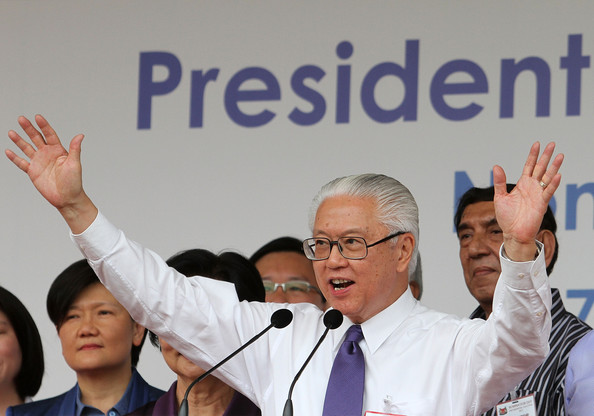

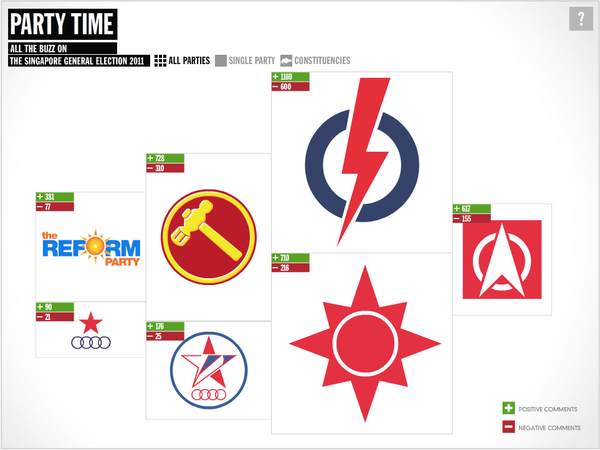
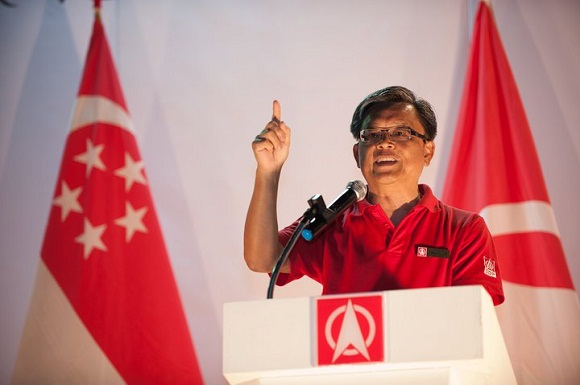










Hi there, Fergus. Interesting view of the electoral system. Just curious, for the part where you mentioned to retain GRCs and introduce the Plurality at Large system, do you foresee any problems with regard to the manner of voting? Though there might be a landslide victory, if there is an instance where the top 5 candidates consist of 2 WP and 3 PAP candidates, how will the management of the GRC work out? This might be a little more problematic if the top 5 consist of 4 PAP and 1 WP candidate, then it might be possible that the 1 WP candidate is left out in decision making process for any grassroots activities. Just a thought, I’d appreciate if you could let me know what you think of this and perhaps a way to minimise the issue in the situation. Thank you. 🙂